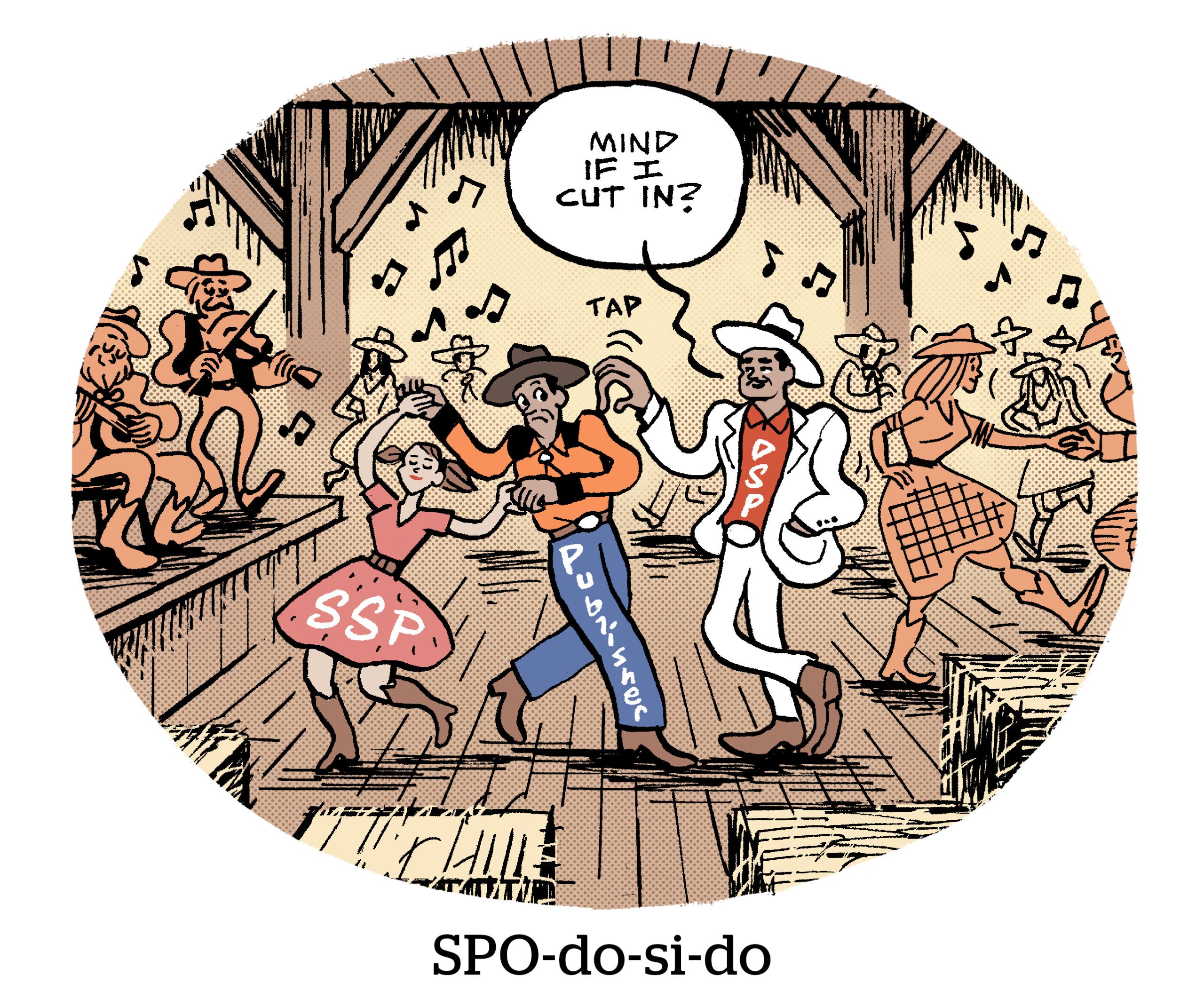
If there’s one thing The Trade Desk’s CEO Jeff Green appears to hate, it’s walled gardens.
At an event in New York City on Tuesday, The Trade Desk (TTD) announced an AI-powered upgrade to its platform – dubbed Kokai – that Green pitched as an attempt to save the open internet from being dominated by Big Tech.
The upgrade is the culmination of multiyear investments in AI-driven campaign optimization, measurement, reporting and data-sharing partnerships with publishers, CTV platforms and retail media networks, Green said at the launch event.
Kokai is the Japanese word for “open waters” and is also a slang term that translates to “open for business” – which is a little wordplay shade tossed in Big Tech’s direction.
“One way to define a walled garden is that you’re big enough to be draconian,” Green said. “None of us in the open internet are big enough to be draconian and be successful, so we have to work together.”
Open vs. walled
Although TTD competes with walled gardens, it’s also taking cues from them, Green said.
That includes emulating the collaboration with third-party app developers that made Apple’s iPhone a success and the streamlined user interface that makes Meta’s ad platform so easy to spend money on.
But one aspect of walled gardens that open internet companies can’t mimic alone is their scale.
With the spirit of collaboration in mind, Kokai includes a series of measurement upgrades and supporting partnerships.
For example, Kokai will compile data from TTD’s retail media partners to set benchmarks for how ad spend affects online and offline sales through its Retail Sales Index. At launch, any campaign that uses Kokai’s targeting and optimization capabilities can receive free performance reporting from Walgreens, Albertsons and Dollar General.
Kokai also introduces the Partner Portal, on online community where third parties can integrate with TTD’s APIs for OpenPath, UID2 and data-sharing for measurement and targeting. The portal was inspired by complaints from partners that faced long wait times for approval.
“I know we have not always been the easiest to integrate with,” Green said. “Just know that [criticism] has sunk deep inside of my soul, and we have changed the way we’re developing and supporting those partners.”
TTD also debuted a metric called the Quality Reach Index to help marketers target relevant upper-funnel customer profiles to drive lower-funnel conversions.
“This is quantifying mathematically how similar your marketing audiences at the top of the funnel are to those that you’re actually selling products to,” Green said.
AI and UI enhancements
Kokai also expands TTD’s AI optimization features to new areas, such as predicting auction clearing prices and scoring how relevant ad impressions are to individual advertisers.
TTD introduced AI-based optimization to its platform through the 2018 launch of Koa. Initially focused on optimizing campaigns, Koa now also features deep neural networks dedicated to several different applications.
One algorithm predicts the clearing price for RTB auctions to prevent advertisers from over bidding on inventory. Another assigns relevance scores for ad placements that are tailored to each individual advertiser’s target audiences and performance objectives.
The Kokai upgrade also includes improved AI optimization capabilities for forecasting performance, prioritizing ad spend based on channel and generating insights without relying on cookies or device IDs.
These optimization features will be available in a shopping cart-like user interface set to launch at the end of this summer, Green said. The interface will allow advertisers to see how metrics like relevance score, budget allocation and performance forecasting will likely affect their campaign before they make a buying decision.
TTD is also rolling out a more expansive user interface based on the periodic table to break down an ad campaign into its essential elements, a concept it calls the Programmatic Table. These elements include a brand’s first-party data sets, budget allocation, target audience, base bid and max bid, and other factors like viewability, ad placement, ad formats and insights derived from TTD’s algorithms.

All these elements will be represented in a grid of boxes that evokes the periodic table’s design. The elements are arranged from left to right according to the impact they’re likely to have on a campaign and how frequently they might need to be changed, Green said.
Although the design choice may seem a little out there, Green said it was inspired in part by his own experience using TTD’s platform to buy ads for the Jeff T. Green Family Foundation, a charity aimed at addressing economic and educational disparities in underserved communities. Once he became a regular user of his own platform, he realized that users need more guidance to build and fine-tune campaigns.
The new interface also facilitates faster reporting because reporting delays have historically been a barrier to optimization, Green said. Each box on the grid displays data for that campaign element, such as an average viewability score displayed in the viewability box, so users can get a broad overview of several metrics. They can also click each element for more detailed reporting, and the platform will no longer require several days to generate a report.
Future plans
Beyond hyping Kokai, Green also previewed TTD’s plans for the next phase of OpenPath, its product for creating a direct supply path to specific sell-side partners. There are 20 publishers integrated with OpenPath today, and TTD wants to grow that number to 100 by this time next year.
There are also more updates to come this year regarding TTD’s UID2 identifier. UID2 will be available as an open currency this summer, which will expand its use cases beyond applications strictly related to advertising, Green said, although he didn’t elaborate on what that would entail. And he predicted that more than 50% of CTV impressions will be tied to a UID2 by the fourth quarter of 2024.
The Trade Desk also plans to provide updates on the status of EUID, its UID2 variant designed for the EU’s GDPR privacy law, later this summer.






 By
By 



